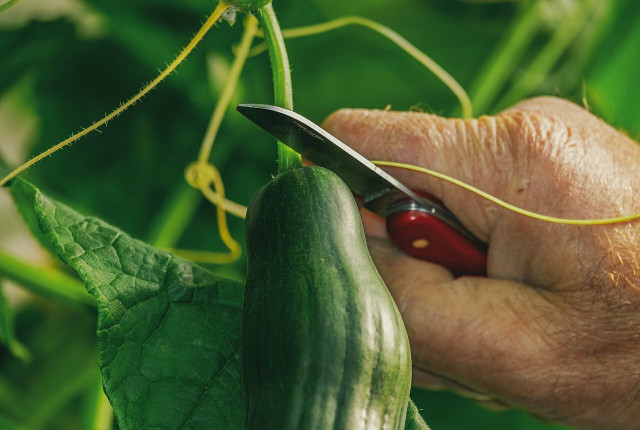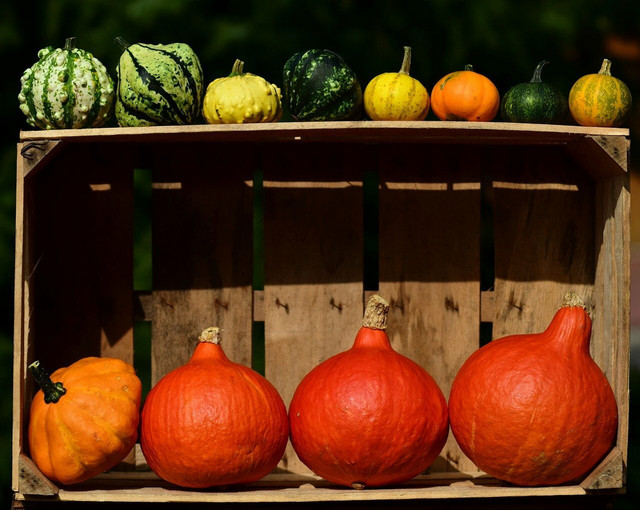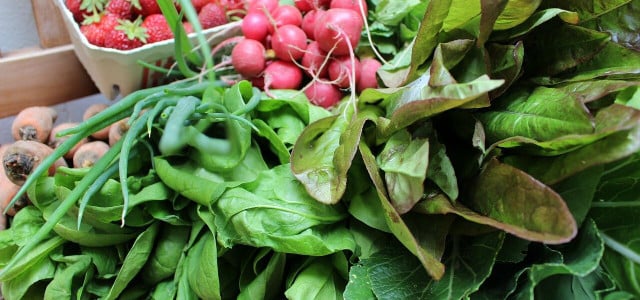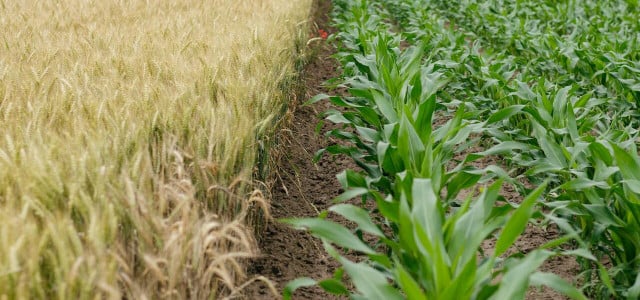What are CSA farms? Community Supported Agriculture refers to a farming operation in which growers and consumers join forces to share the risks and benefits of food production.
Community Supported Agriculture (CSA), also known as crop sharing, describes a farming model in which a group of individuals shares responsibility for and the benefits of food production with the farmer(s). CSA isn’t a new model. Though there has been a surge of interest in the concept in recent years, it has been around for several decades.
What Community Supported Agriculture Is and How It Works

(Foto: CC0 / Pixabay / Couleur)
So how does it work exactly? Though every CSA operation is different, the general concept looks something like this: individuals buy “shares” from the farmer or people operating the farm. Members commit to paying a certain amount of money to sustain the farm throughout a year, often investing in the farm before the growing season starts, or paying on a monthly basis. In return, each person receives the same amount of fresh produce year-round. So, basically, the members own the farming operation and sometimes even share the land.
In order to be fully operational but also be open to people from different socioeconomic backgrounds, many CSA farms suggest an average fee in order to raise the required amount but follow a “pay-what-you-can” strategy. They also usually encourage their members to help out on the farm, from planting seeds to watering the crops, harvesting, and distributing the produce. But this is all voluntary. In this way, CSA places an emphasis on individual abilities and circumstances and fosters social equity.
Sometimes traditional farms shift their focus to CSA, other times interested individuals join forces with others to buy a shared plot of land. There usually are some regular employees who bring the necessary expertise into the farming operation and do the bulk of the work, whose wages are covered by the membership fees.
The community aspect of CSA is especially relevant when it comes to decision-making processes, placing trust in each other and the farming operation, and sharing its risks. Farms following the CSA model often also plan community events to share special occasions with everyone and strengthen connections, both between each other and within the cycle of food production and consumption.
Pros and Cons of Joining a CSA Farm Project



(Foto: CC0 / Pixabay / Tama66)
Above, we’ve already touched upon some of the benefits of CSAs. But let’s take a closer look – what advantages and disadvantages are there to joining a CSA farm?
Let’s begin with some of the more obvious disadvantages. You may be wondering what happens if there is a drought or some other unavoidable event ruining the produce. Becoming a member of a CSA operation always means taking into account the risk of getting fewer “returns” on your investment than you had hoped for because in farming, you cannot predict with absolute certainty how well each crop will turn out. In this sense, one disadvantage clearly is that you don’t necessarily get exactly what you pay for. However, just like the farm may come up short during some seasons, you may end up getting more than you expected during others.
However, this disadvantage is also a matter of perspective. Regardless of what your return looks like, you are still investing in a sustainable farming method that doesn’t harm our ecosystem and takes a future-oriented approach. Most CSAs grow their food without the use of pesticides, opt for non-GMO heirloom seeds and plant mixed crops, thereby reducing pest and disease incidence as well as soil erosion and not releasing toxic materials into the environment (Eva Weltzien and Anja Christinck in Agricultural Systems).
Another question you might ask is what if some of the fruits, vegetables, and other produce you receive are simply not to your taste? Different CSA farms offer different answers because where there are problems, the community can come up with solutions. For instance, some communities keep a dedicated box for trading produce with other members, while others might sell leftover food to cover potential losses. This also helps combat food waste.
As a member, you have a say in how the CSA model is fleshed out and you can inspire new ideas and actions to be taken. Due to the democratic structure of these agricultural communities and the close connection between grower and consumer, CSAs can also more easily react to and meet the demands of the individual “customer”.
Finally, Community Supported Agriculture supplies fresh food that is seasonal, regional, and organic and thereby helps reduce our carbon footprint.
How to Find a "CSA Farm" Near You



(Foto: CC0 / Pixabay / ulleo)
Whether this model is for you or not definitely depends on your lifestyle; whether you move around a lot and have the time to prepare fresh meals, for example. If you’re convinced and Community Supported Agriculture seems like the right fit for you, you can get started by checking for CSA farms near you. Talk to your local farmers to see if they know of any projects or check with the USDA’s Community Supported Agriculture (CSA) Directory!
Read more:
- Vertical Farming: Taking Agriculture to New Heights
- Factory Farming: A Look at This Problematic System
- Is Nose to Tail Eating Sustainable?
Do you like this post?







